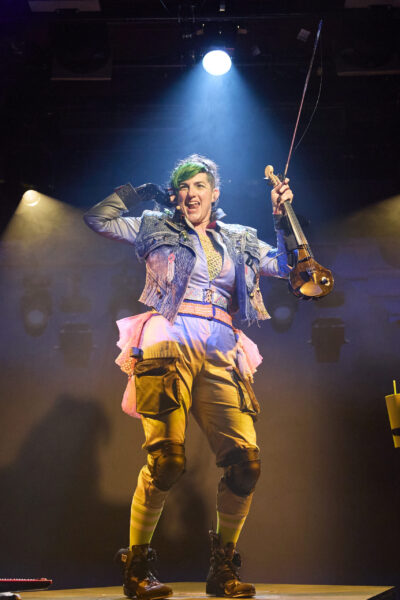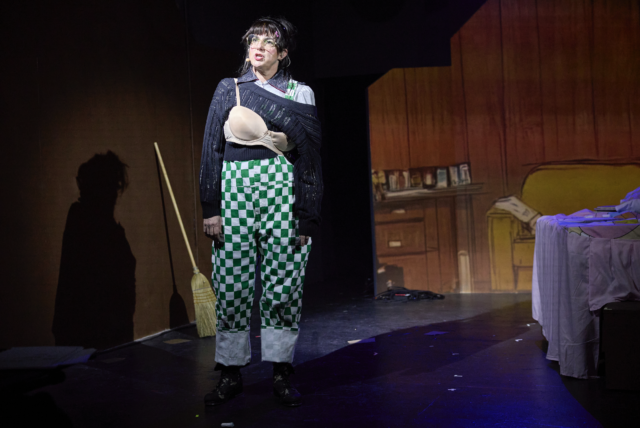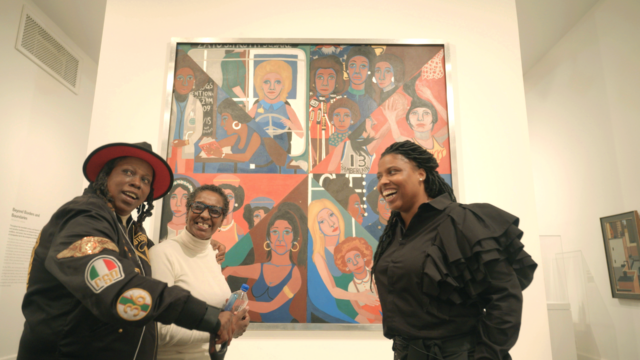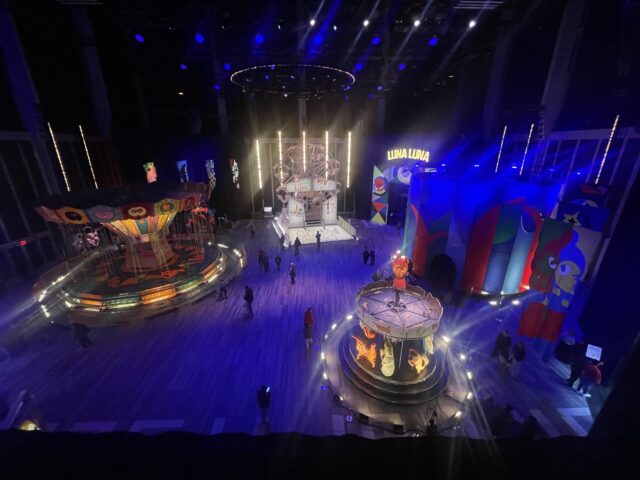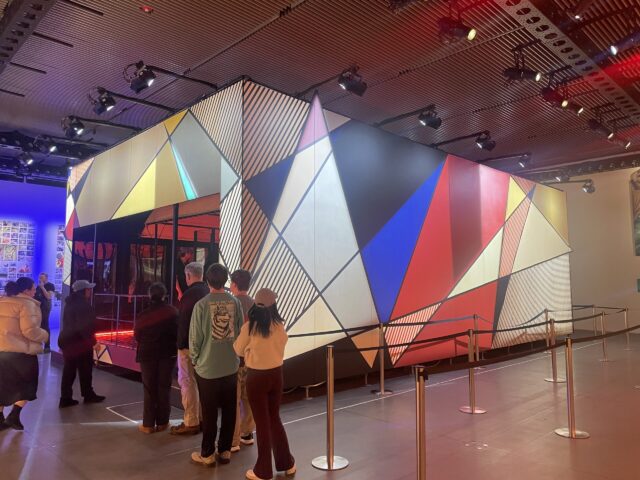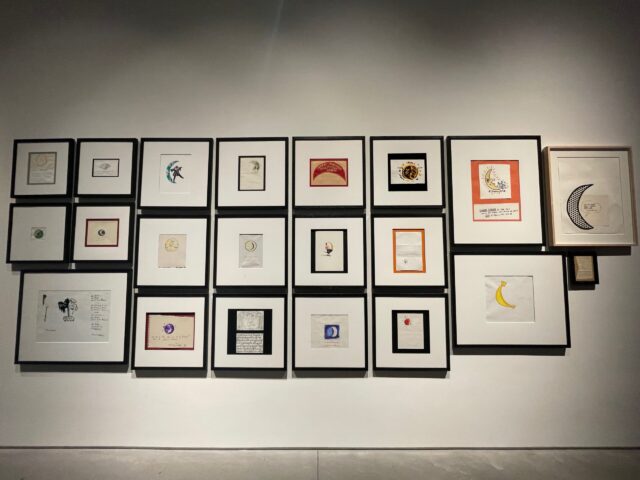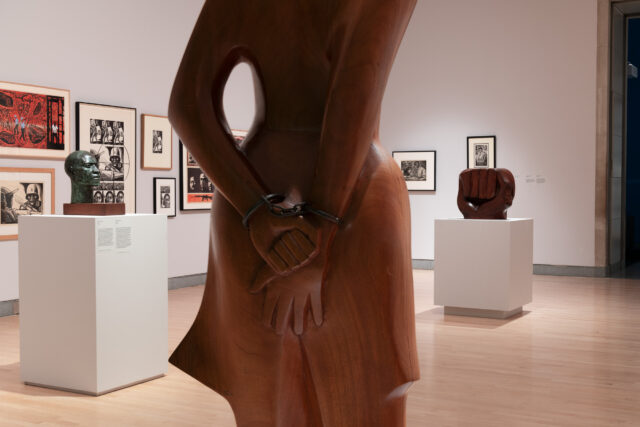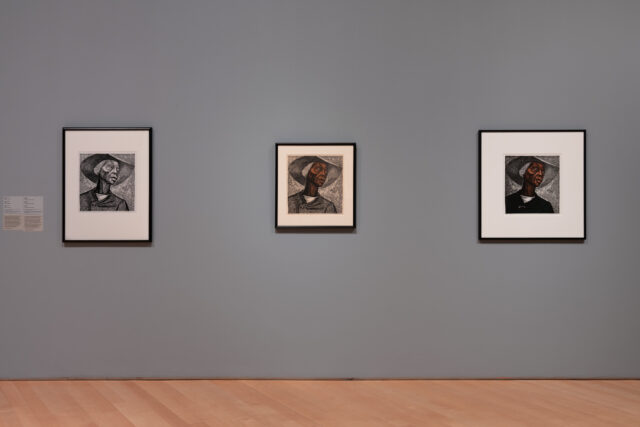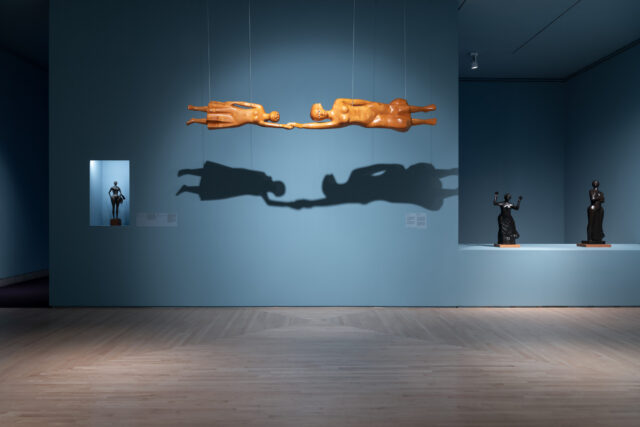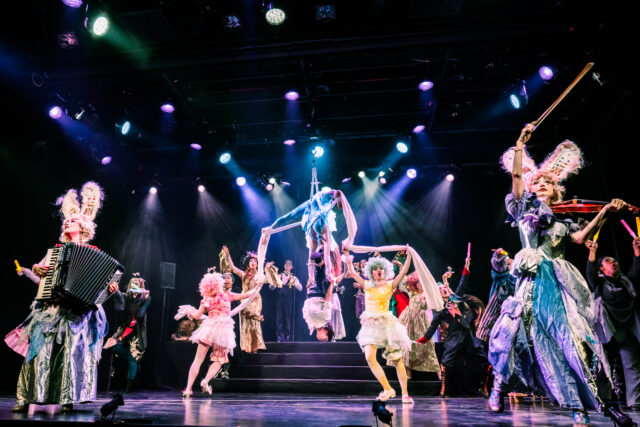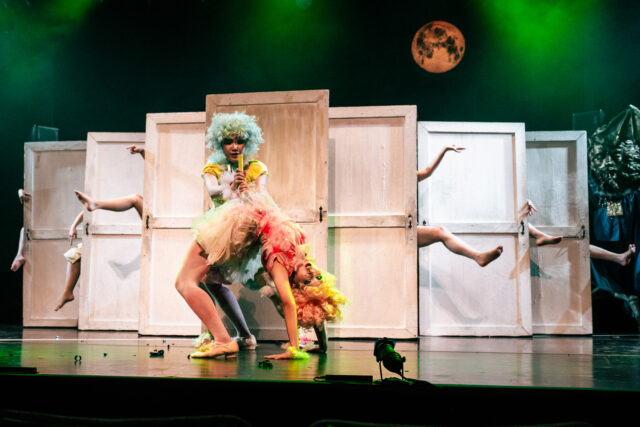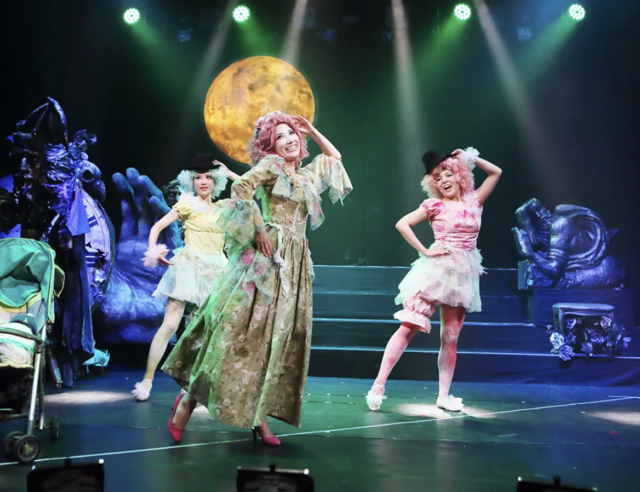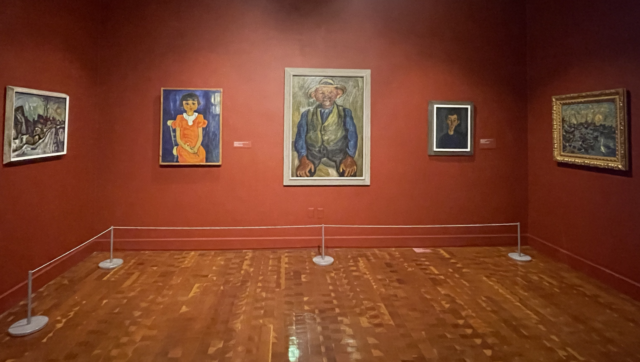
William Henry Johnson paintings are a highlight of “Nordic Utopia?” show at Scandinavia House (photo by twi-ny/mdr)
NORDIC UTOPIA? AFRICAN AMERICANS IN THE 20th CENTURY
Scandinavia House
58 Park Ave. at 38th St.
Tuesday – Saturday through March 8, free
212-847-9740
www.scandinaviahouse.org
One of the best gallery shows right now in New York City is the small but revelatory “Nordic Utopia? African Americans in the 20th Century” at Scandinavia House, which explores the surprising connection between African American jazz musicians and Denmark, Finland, Norway, and Sweden. Continuing through March 8, “Nordic Utopia?” comprises painting, drawing, photography, ceramics, sculpture, music, and video by and about Black artists who left the United States for calmer pastures in Scandinavia.
“It was the first time in my life that I felt a real, free man,” visual artist and collector Howard Smith said in a 1976 interview about moving to Finland in 1984 after teaching at Scripps College in California. “So much so that one day I was walking down the street, I panicked because I suddenly realized that I had no further need for armor. I felt absolutely naked. In the United States you could not possibly walk down the street feeling free, spiritually unclothed, because you always felt that you are subject to attack. Well, here I am walking and I suddenly realize I have no armor whatsoever. I felt light as a feather — and it was frightening.” Smith, who died in 2021, has ten works on view, including several depictions of flowers, the small stoneware sculpture Female, the white porcelain Frida, and the 1986 Calligraphy Plate.
Sweet jazz floats in the air as visitors make their way through the three sections: “Creative Exploration & Cross Pollination,” “Lifelong Residency & Lasting Careers,” and “Travels & Sojourns,” encountering photos of Josephine Baker (including one by Helmer Lund-Hansen of the Black Venus in a white fur, cradling black and white baby dolls), Babs Gonzales, Fats Waller, Coleman Hawkins, and Dexter Gordon, who settled in Scandinavia from 1962 to 1976; “Since I’ve been over here, I felt that I could breathe, you know, and just be more or less a human being, without being white or black, green or yellow,” the LA-born saxophonist told DownBeat magazine.
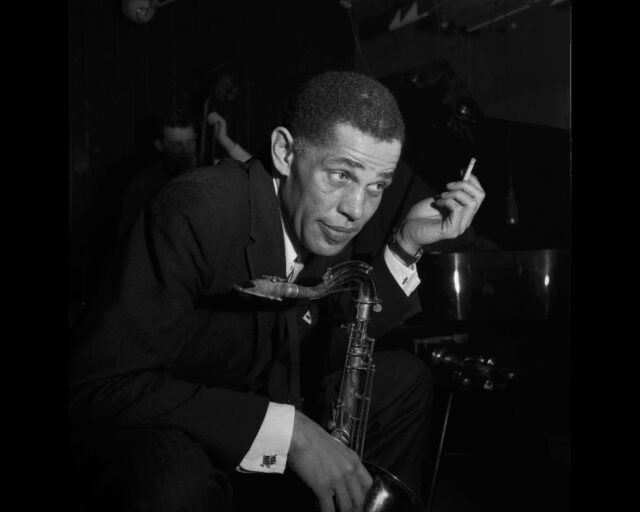
Dexter Gordon at Jazzhus Montmarte, silver gelatin print, 1964 (photo by / courtesy of Kirsten Malone)
In Hans Engberg’s 1970 two-part documentary Anden mands land, an ex-pat writer explains, “I’m in a new man’s land. Here, I’ve found friends, buddies, and allies.” Eight surrealist paintings by New York City native Ronald Burns take viewers on a fantastical journey involving floating women, complex grids, a carousel, “Mental Costumes,” and a pair of dizzying renderings of “The Triumph of Nature.” The highlight of the show are six oil paintings by William Henry Johnson, three portraits, two gorgeous landscapes (Sunset, Denmark and A View Down Akersgate, Oslo), and the captivating Boats in the Harbor, Kerte-minde.
As the exhibition approaches its final weeks, there are a handful of special programs happening. On February 22 at 3:00, cocurators Ethelene Whitmire and Leslie Anne Anderson and scholars Denise Murrell and Tamara J. Walker will gather for a free two-hour symposium. On February 25 at 2:00 ($5), Sámi author and journalist Elin Anna Labba will discuss her book The Rocks Will Echo Our Sorrow!, about the expulsion of the Sámi from northern Norway and Sweden, in a virtual talk with moderator Mathilde Magga. On February 26 at 6:30 ($13), Scandinavia House will screen Bertrand Tavernier’s 1986 film about Dexter Gordon, ’Round Midnight, followed by a conversation with New Yorker film critic Richard Brody and Gordon’s widow, Maxine, author of Sophisticated Giant: The Life and Legacy of Dexter Gordon. And on March 5 at 5:30, ASF’s Emily Stoddart will lead a free guided tour of the show.
[Mark Rifkin is a Brooklyn-born, Manhattan-based writer and editor; you can follow him on Substack here.]
